Refraction Of Light
Key Notes:
Definition
- Refraction: The bending of light as it passes from one medium to another due to a change in its speed.
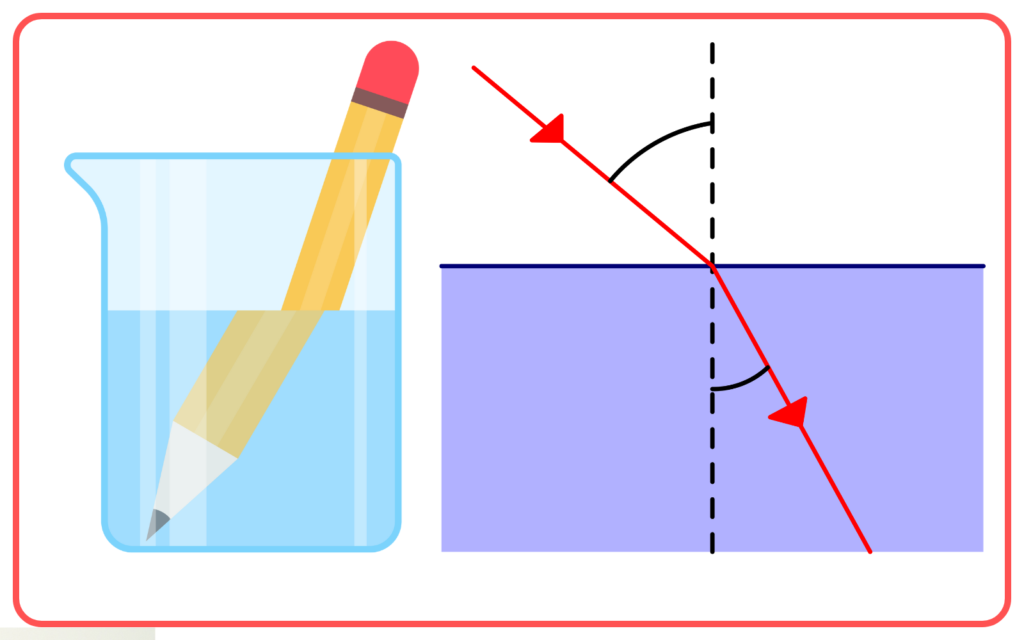
Cause of Refraction
- When light moves between two transparent media (e.g., air to water), its speed changes because of the different optical densities of the media.
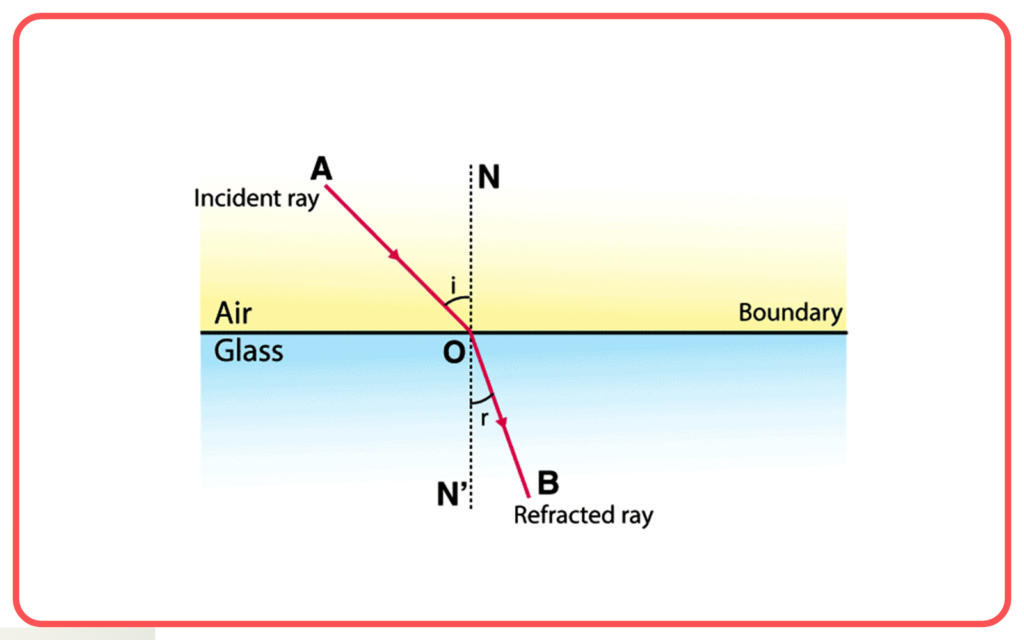
Key Terms
- Incident Ray: The ray of light approaching the boundary of two media.
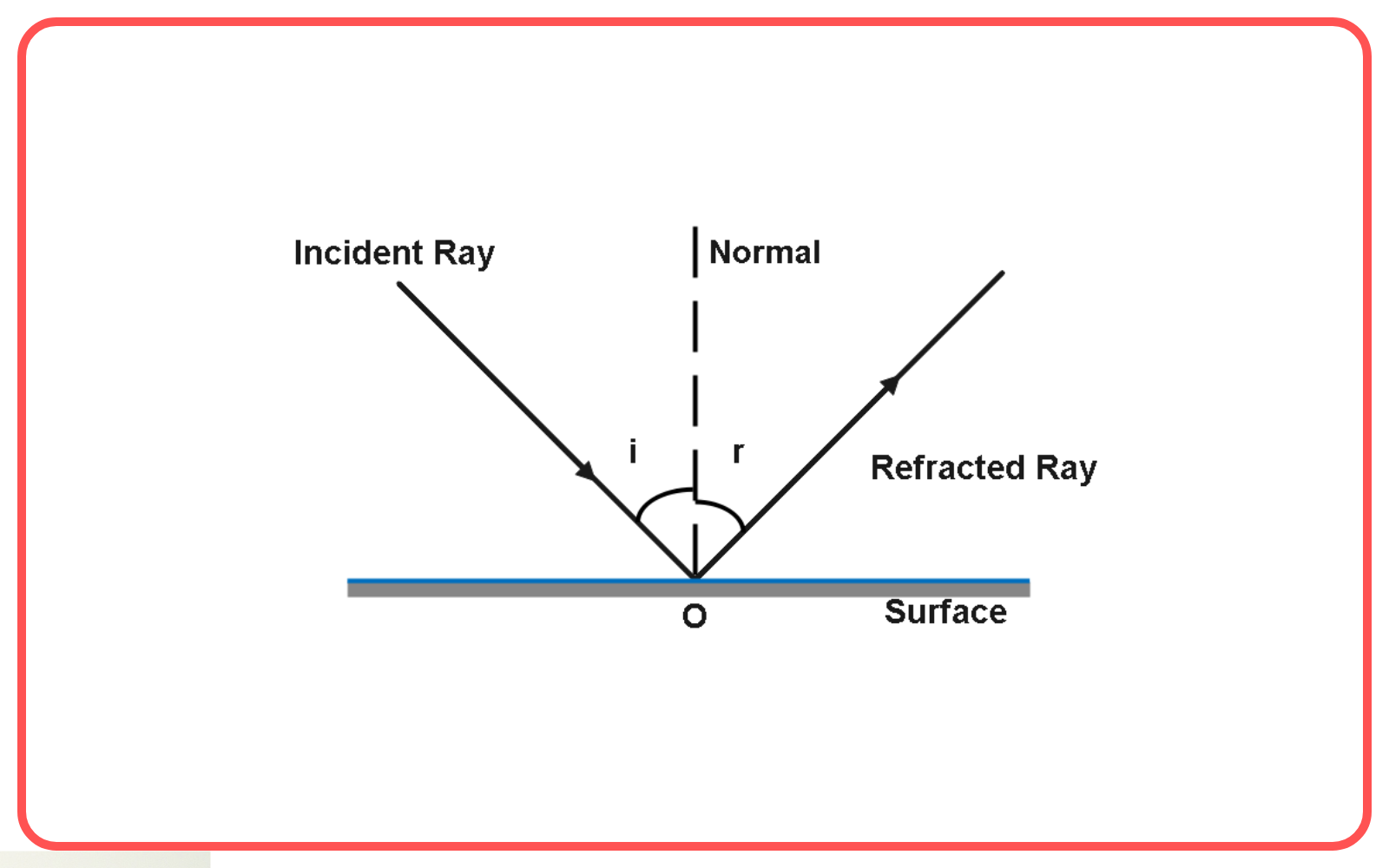
- Refracted Ray: The ray of light that bends as it enters the second medium.
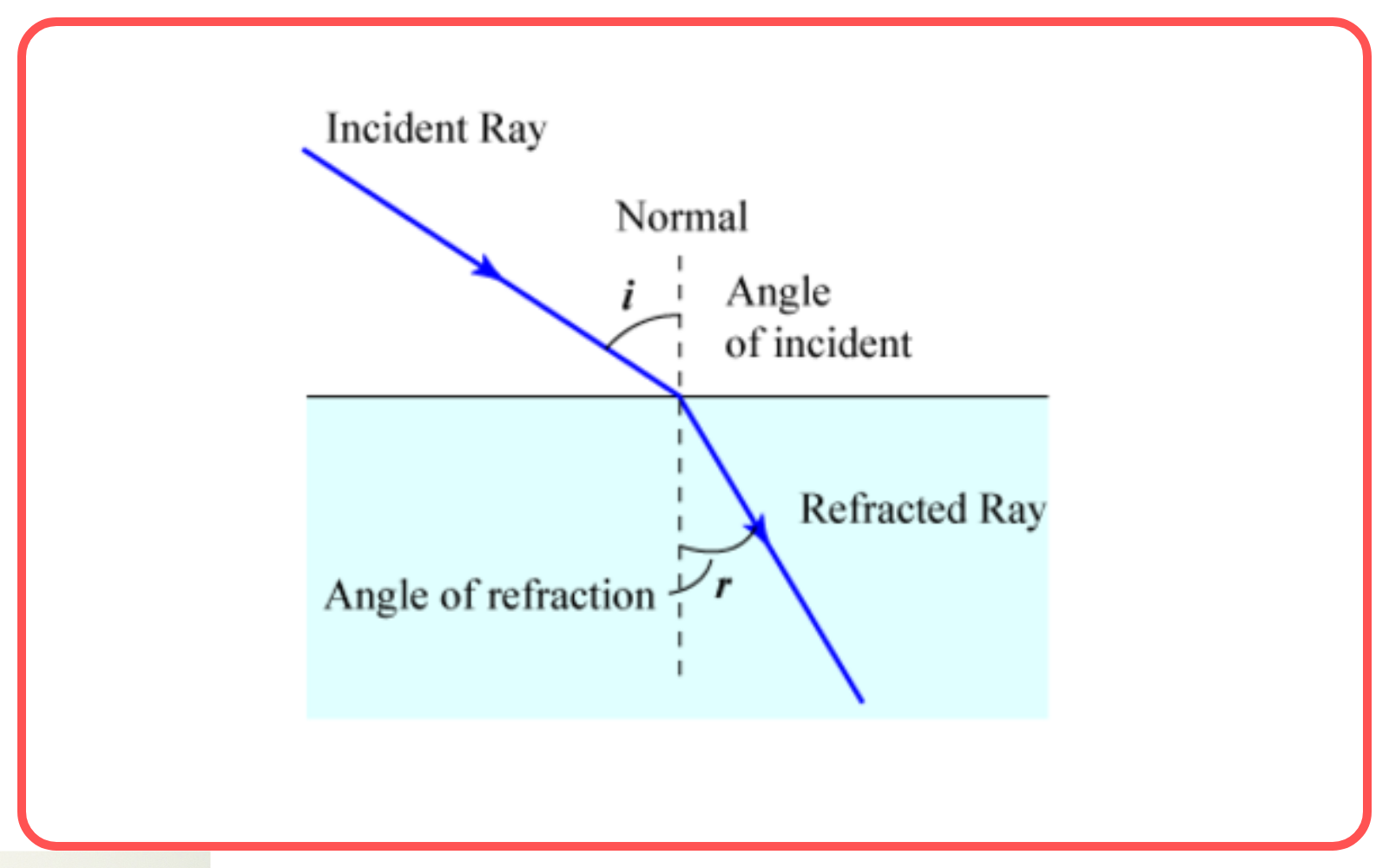
- Normal: An imaginary line perpendicular to the surface at the point of incidence.
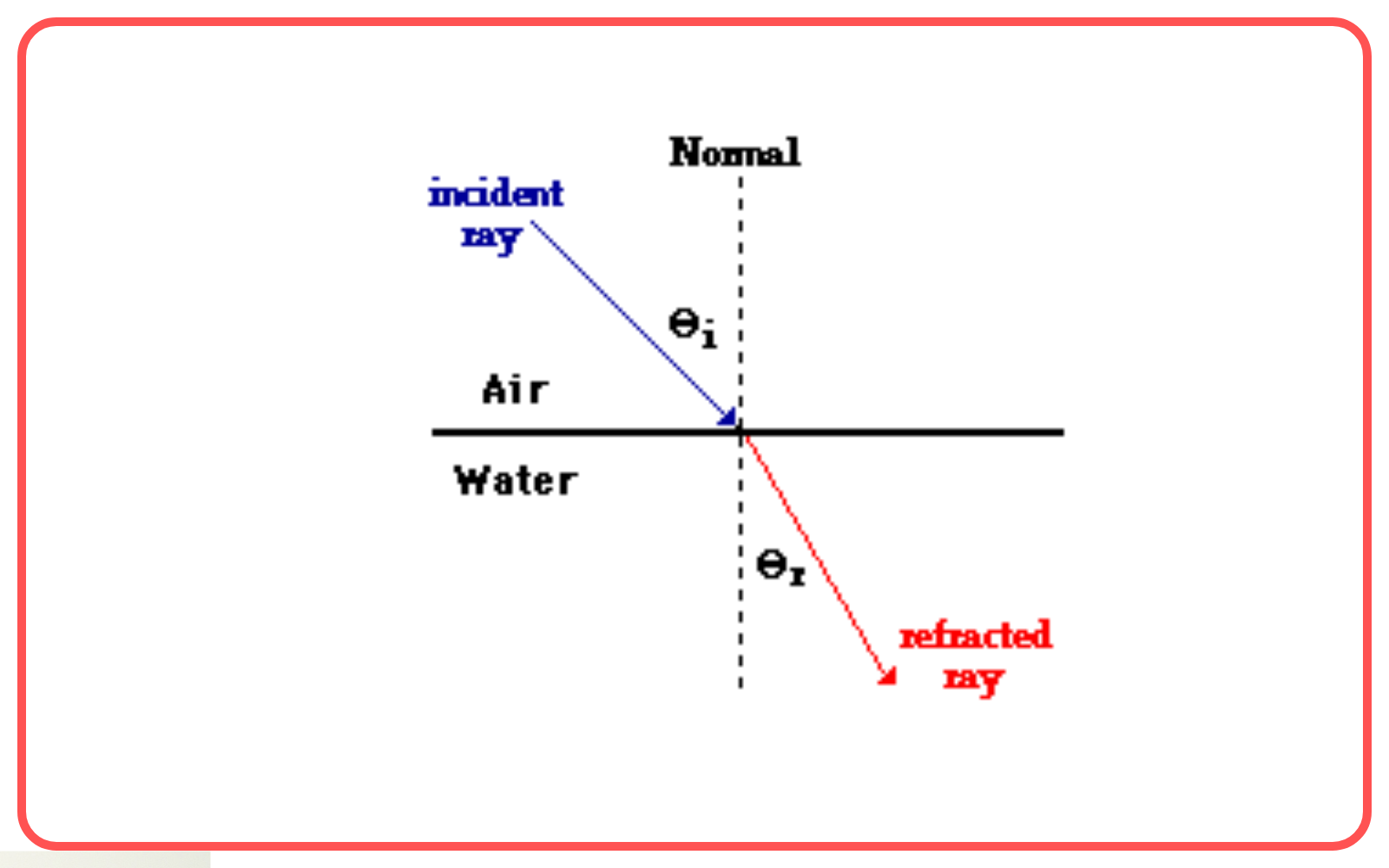
- Angle of Incidence (i): The angle between the incident ray and the normal.
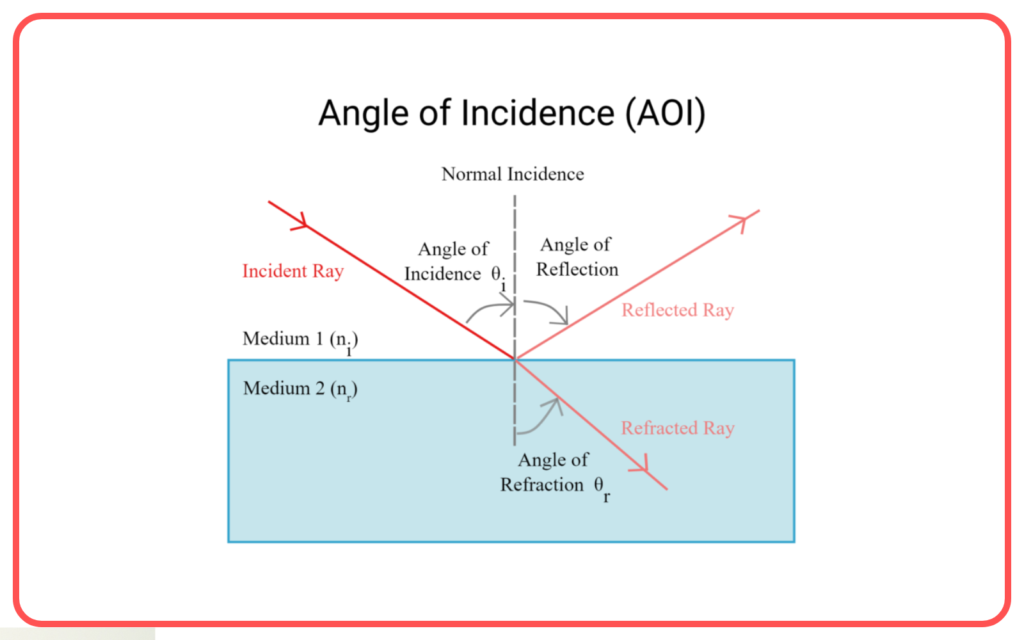
- Angle of Refraction (r): The angle between the refracted ray and the normal.

Laws of Refraction
- The incident ray, the refracted ray, and the normal at the point of incidence all lie in the same plane.
- Snell’s Law: The ratio of the sine of the angle of incidence to the sine of the angle of refraction is constant for a given pair of media.
sini / sinr = n
where n is the refractive index.
- Absolute Refractive Index (n): The ratio of the speed of light in a vacuum (c) to the speed of light in the medium (v).
n = c/v
- Relative Refractive Index: The ratio of the refractive indices of two media.
Effects of Refraction
- Apparent Depth: Objects under water appear shallower than their actual depth.
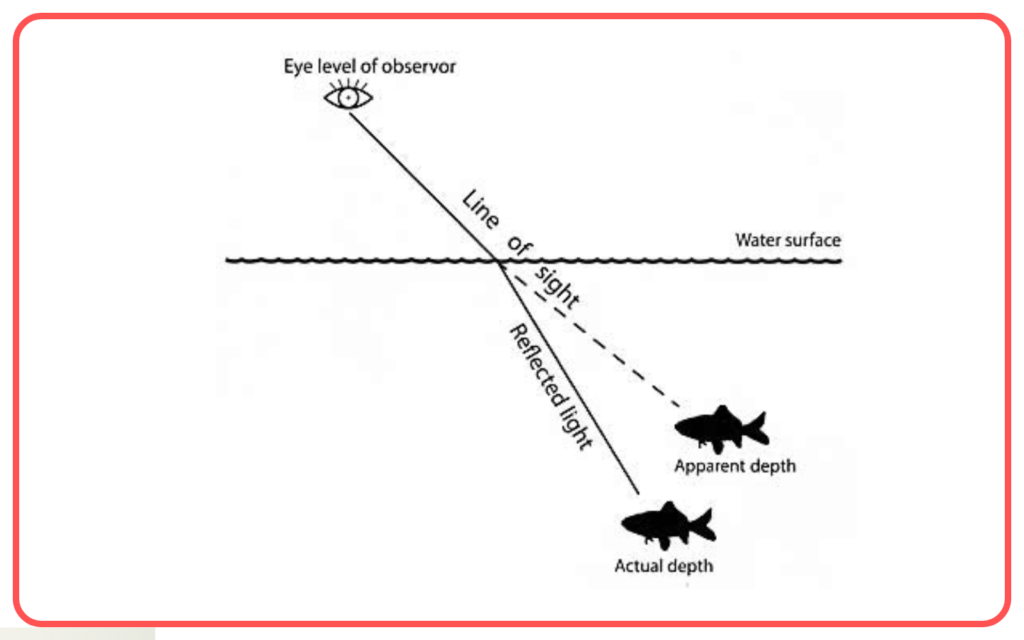
- Bent Appearance of Objects: A stick partially immersed in water appears bent at the water surface.

- Dispersion: Refraction causes white light to split into its constituent colors (e.g., rainbow formation).
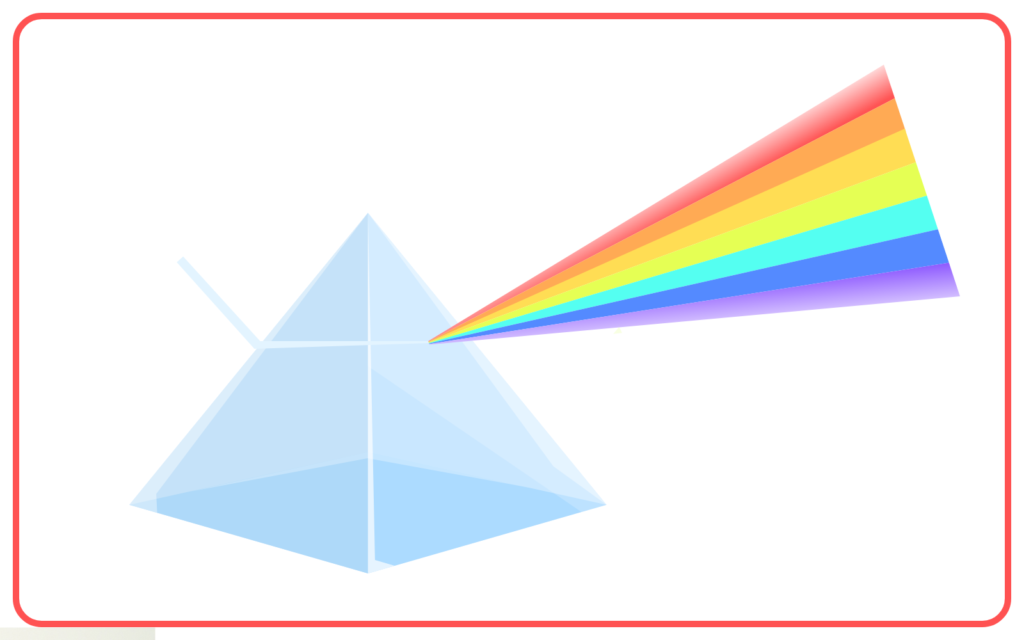
Critical Angle and Total Internal Reflection
- Critical Angle (C): The angle of incidence in the denser medium for which the angle of refraction in the rarer medium is 90∘.
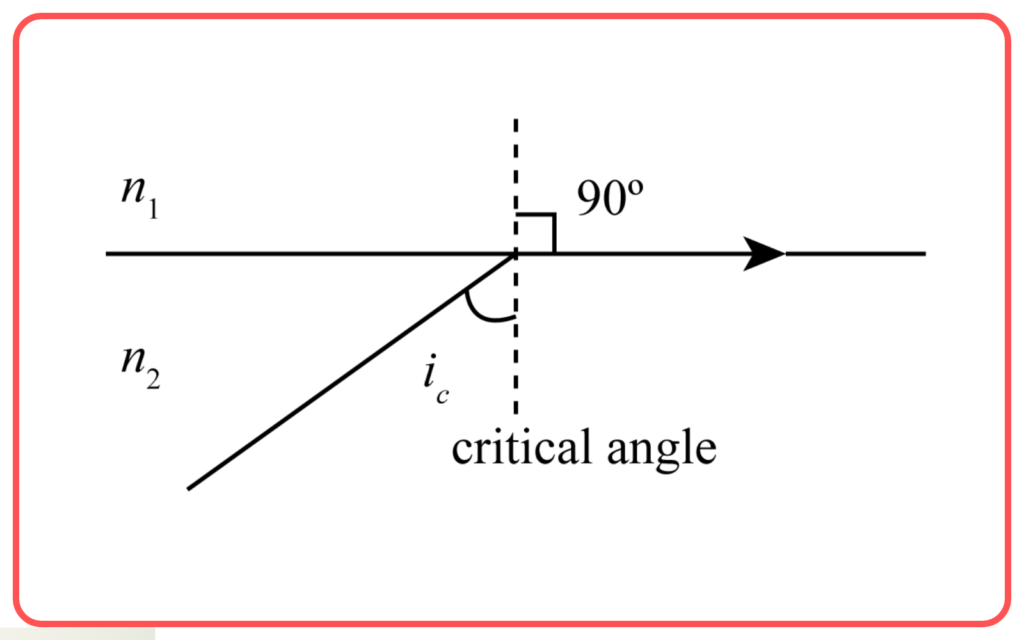
- Total Internal Reflection: When the angle of incidence exceeds the critical angle, light reflects entirely back into the denser medium.
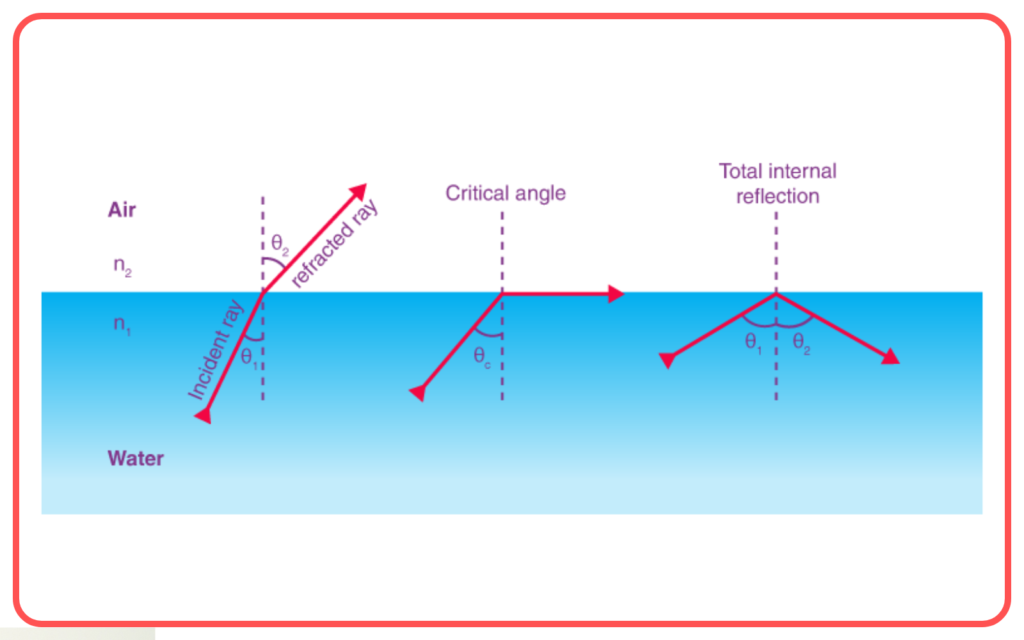
Applications of Refraction
- Lenses: Used in eyeglasses, cameras, and microscopes.
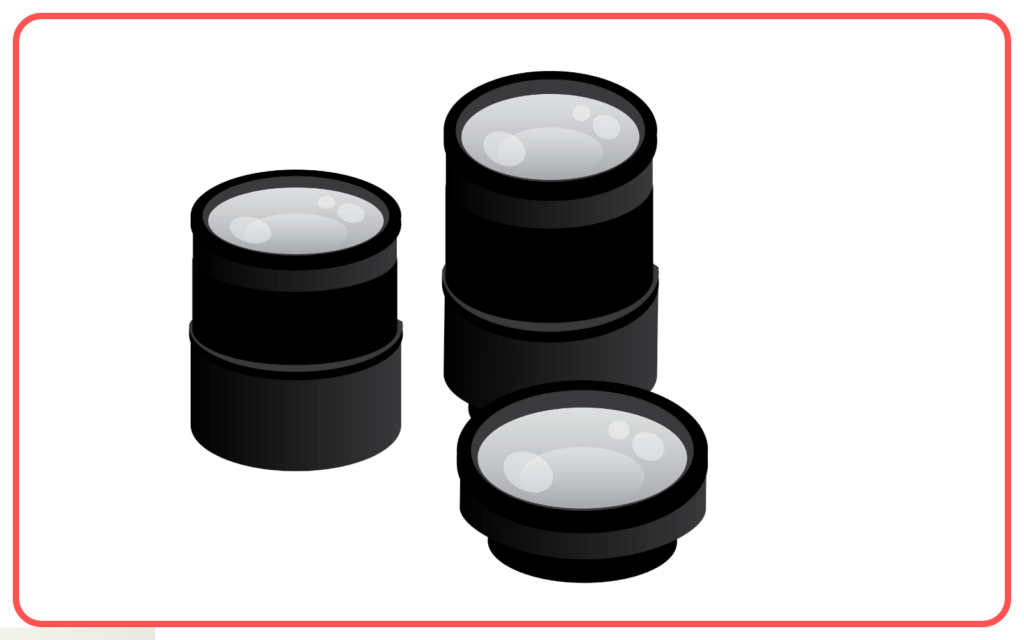
- Prisms: Separate light into colors (spectra).
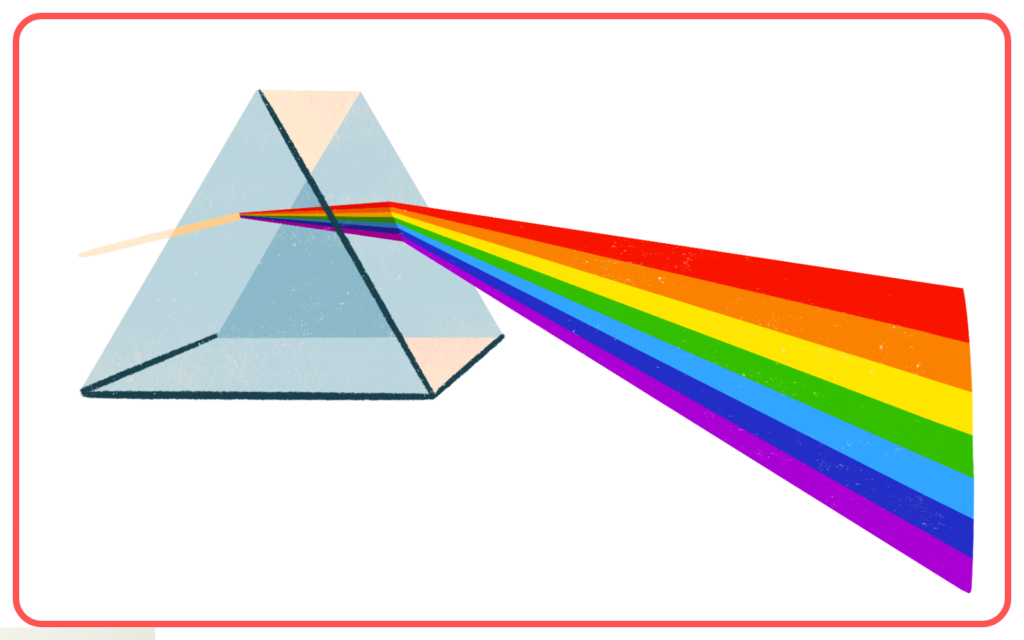
- Mirages: Optical illusion due to atmospheric refraction.
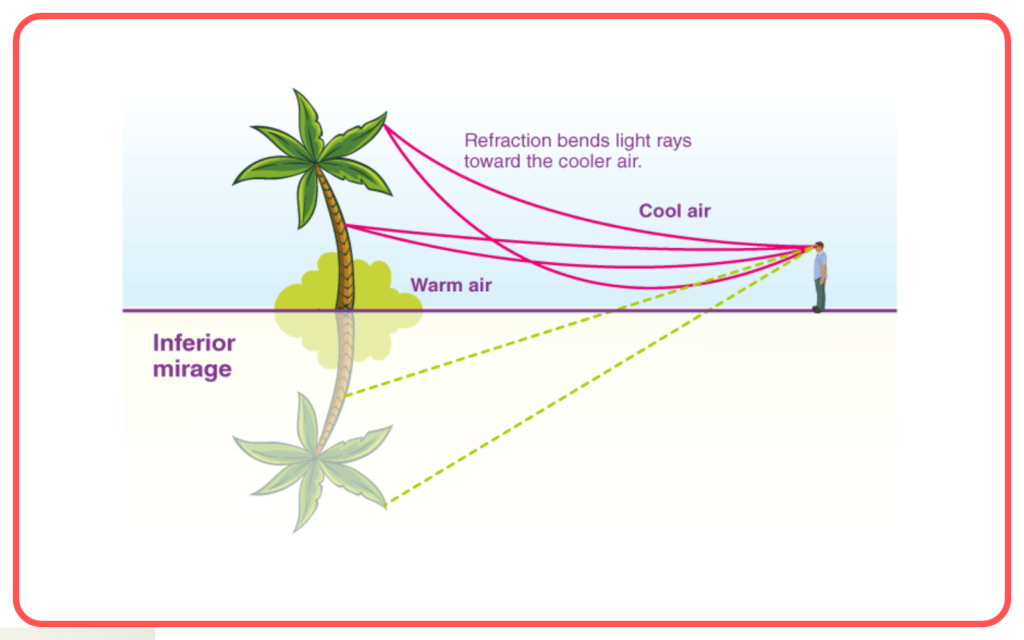
Real-Life Examples
- Formation of rainbows.

- Twinkling of stars (caused by atmospheric refraction).
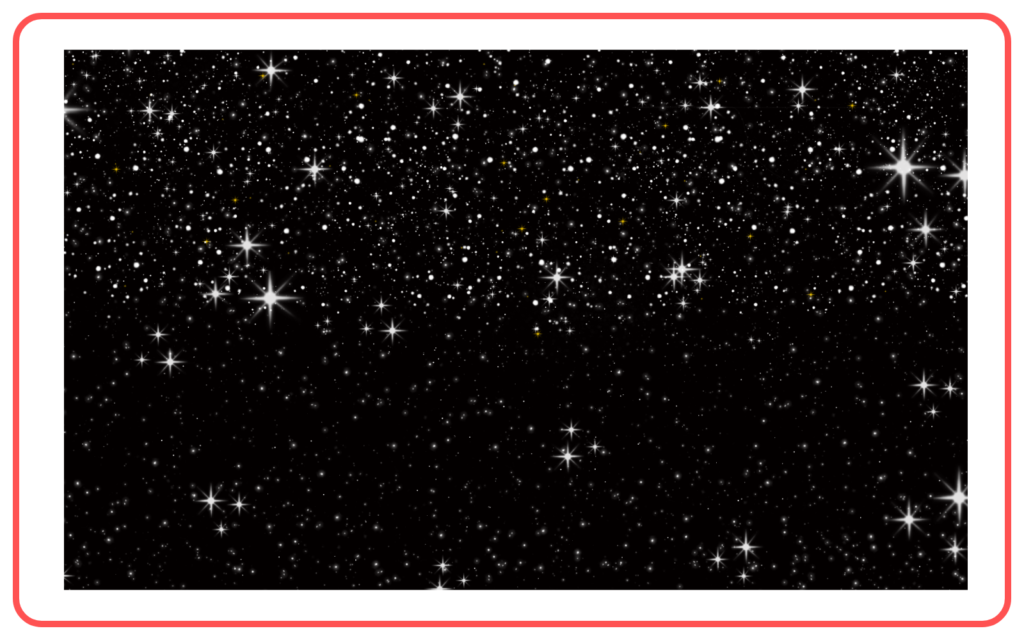
- Bending of light in optical fibers for communication.
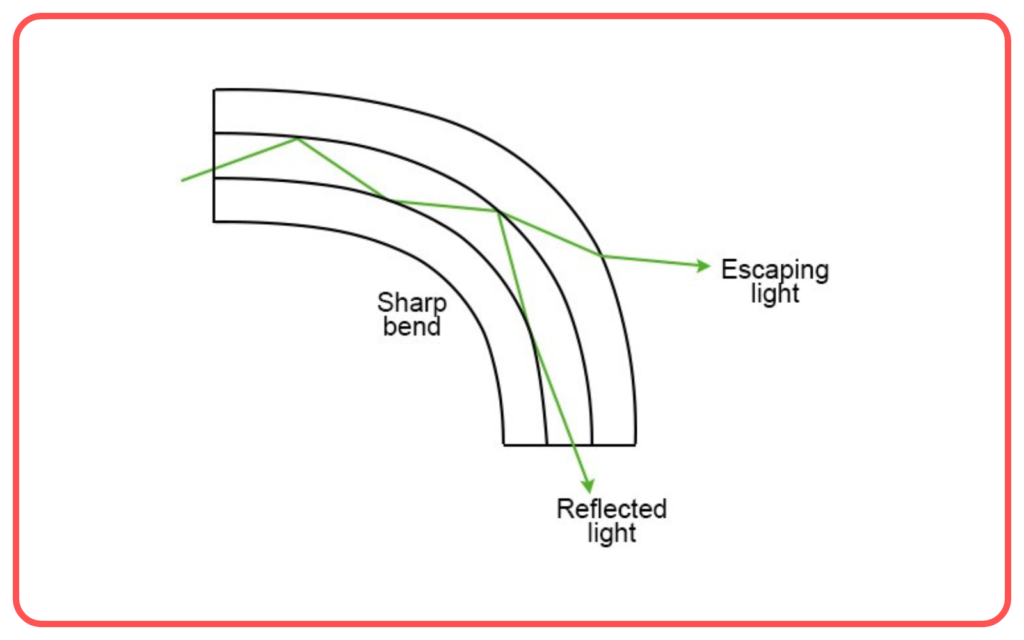
Experiments to Understand Refraction
- Refraction of light through a glass slab: Demonstrates lateral shift.
- Refraction through a prism: Demonstrates dispersion.
Important Formulas
Snell’s Law:
n1sini = n2sinr
Refractive Index:
n = Speed of light in vacuum / Speed of light in medium
Let’s practice!

